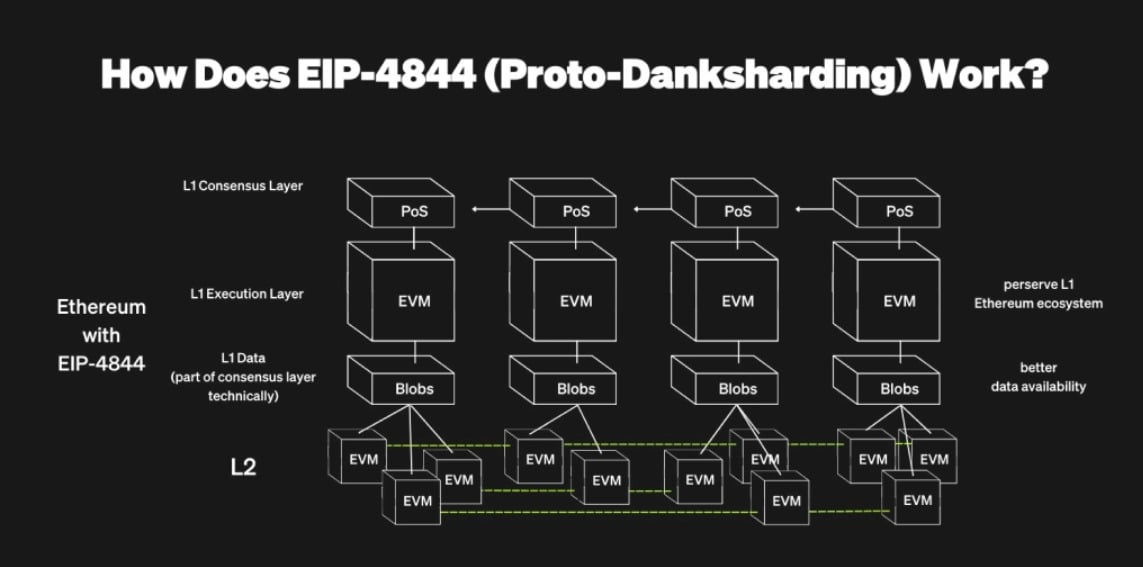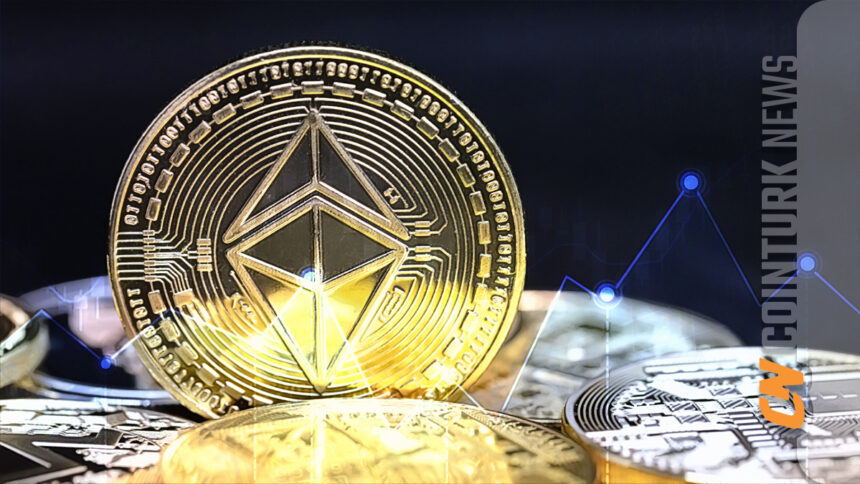The long-awaited Dencun upgrade for Ethereum has just taken place. This move is anticipated to have an impact on the price. The upgrade, which includes multiple improvements, is most notable for the introduction of blobs aimed at reducing transaction fees. Let’s now delve into the details of this update.
Ethereum Dencun Upgrade
A new block is produced approximately every 12 seconds, and the date for the update was determined accordingly. The upgrade was expected to happen at 16:55 Turkey time. As the Bitcoin price reached a new ATH just before Dencun, we can assume that today’s move will have an increased effect on the price.
What is it?
Ethereum developers have been preparing for this update for over a year. The primary goal of the update is to make layer2 solutions more cost-effective. Dencun, a combination of the project names Deneb and Cancun, consists of two upgrades that will occur simultaneously in Ethereum’s consensus and execution layers. Technically, we can call this a hardfork.
This upgrade, targeted for completion by the end of 2023, has been postponed until today due to technical concerns. During this period, engineers monitored the results and performance of this improvement proposal on three different testnets.
How Will Layer2 Fees Decrease?
Networks like Arbitrum and Starknet are actually second-layer smart contract platforms attached to Ethereum. Developers publish their protocols on these networks but still indirectly secure their data on the Ethereum network. The main goal of layer2 solutions is to benefit from the main network’s security and popularity while obtaining more flexible, cheaper, and faster infrastructures.
With today’s change, data coming from L2 networks to the Ethereum mainnet will be processed with a capability called “proto-danksharding.” Dencun includes a series of code changes, but the biggest one is the introduction of this method called “proto-danksharding.”

The above actually explains much better what has changed with the arrival of blobs.
The Future of Ethereum
Proto-danksharding is the first step towards “sharding,” a series of techniques that allow Ethereum’s blockchain to process more transactions at a lower cost by dividing it into mini-shards (or mini chains). In fact, we still have a long way to go before we see its final form or the form targeted from today. However, today’s move is one of the most significant steps towards that ultimate goal.
But today’s move should, when fully implemented by all layer2 solutions in 2-3 weeks, reduce transaction fees by 90% in the short term, thereby increasing the number of users on the network (and on second-layer networks). This will likely have a positive effect on the unit prices of altcoins along with the network value.
Polygon co-founder Jordi Baylina had this to say on the matter;
“Prices should drop because this is a supply and demand issue. Your supply is larger, data availability on Ethereum will be larger, so the price should be lower. How much will it drop? We don’t know, it’s hard to guess.”
Currently, the ETH transfer cost on Arbitrum is roughly $0.24 and the swap fee is $0.67. For Optimism, these are $0.47 and $0.92, respectively. For Polygon, they are $0.78 and $2.85. The expected fee improvement is around 90%, and if this happens, the fee appeal of competitors like Solana could weaken. Transaction fees on networks like Solana and Avalanche (even if layer2 solution fees drop by 90%) are very low and likely to remain so for a long time. However, if Ethereum layer2 solution fees fall below a certain threshold, it could lead to users from the higher capital group moving to these networks.
Developers can now start focusing on the Electra + Prague (Petra) update, which they plan to launch in a few years. This upgrade is still unclear as to what improvements (how big?) will be made, but it is expected that the focus will continue on steps related to data storage.

 Türkçe
Türkçe Español
Español









